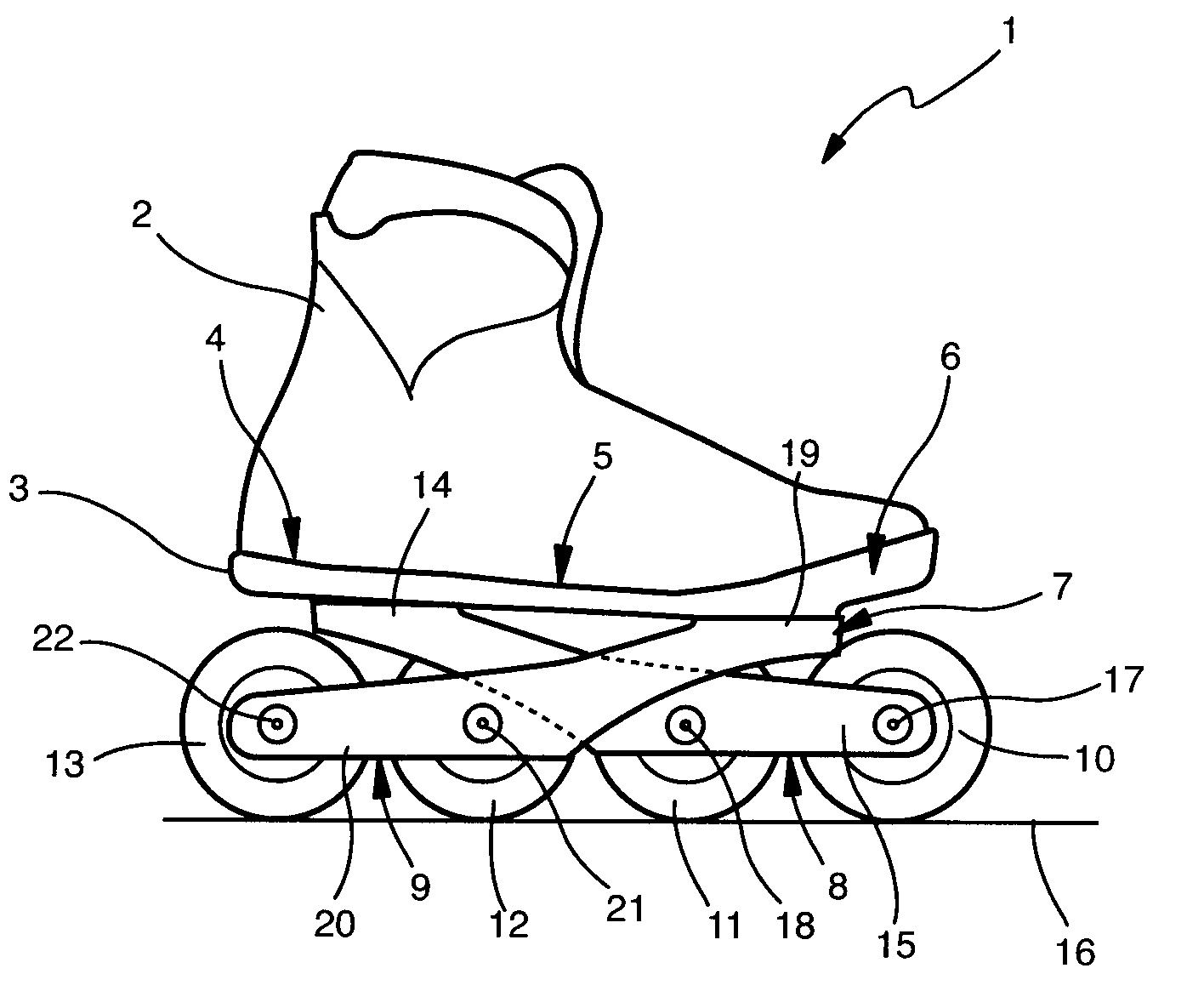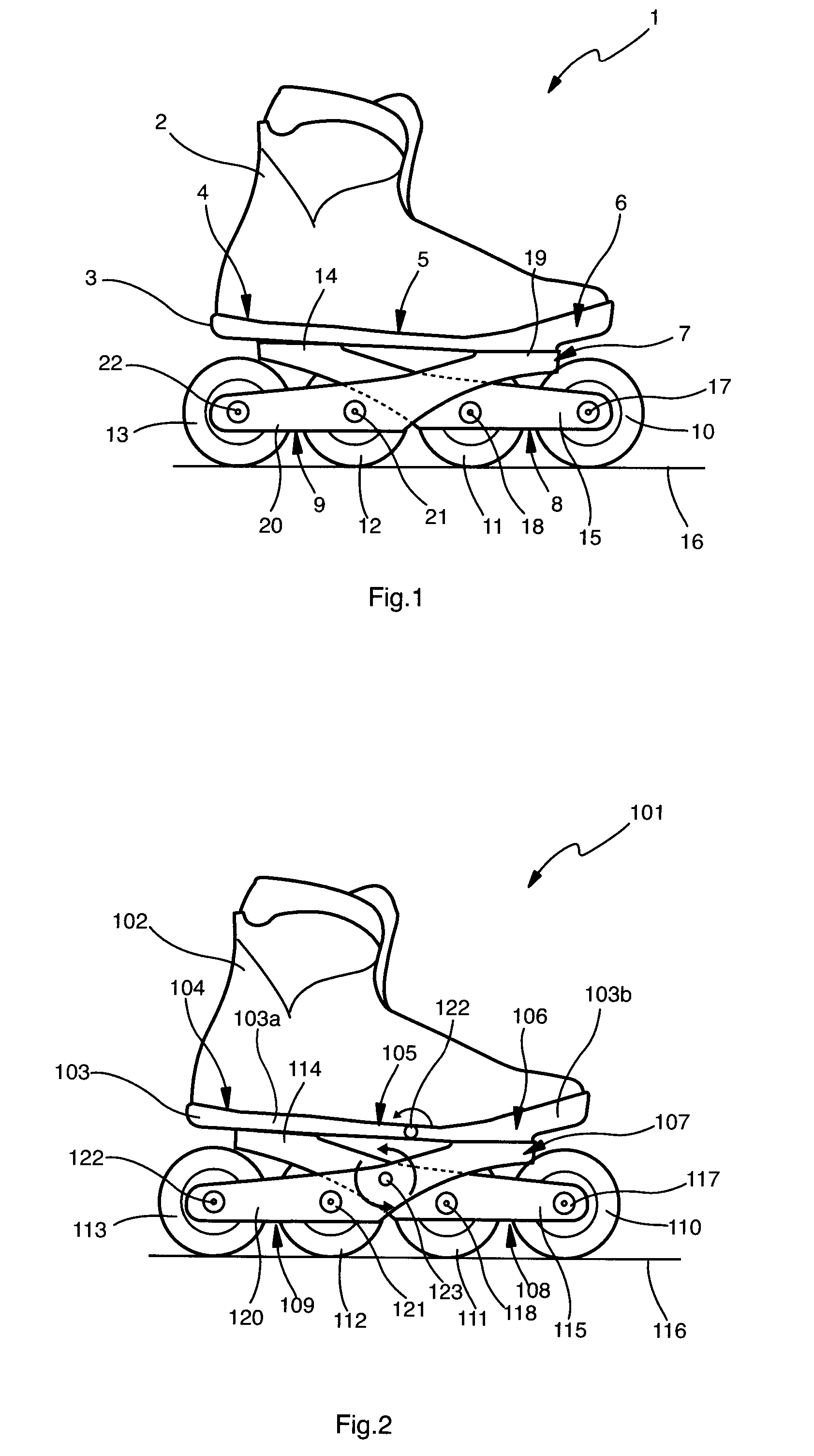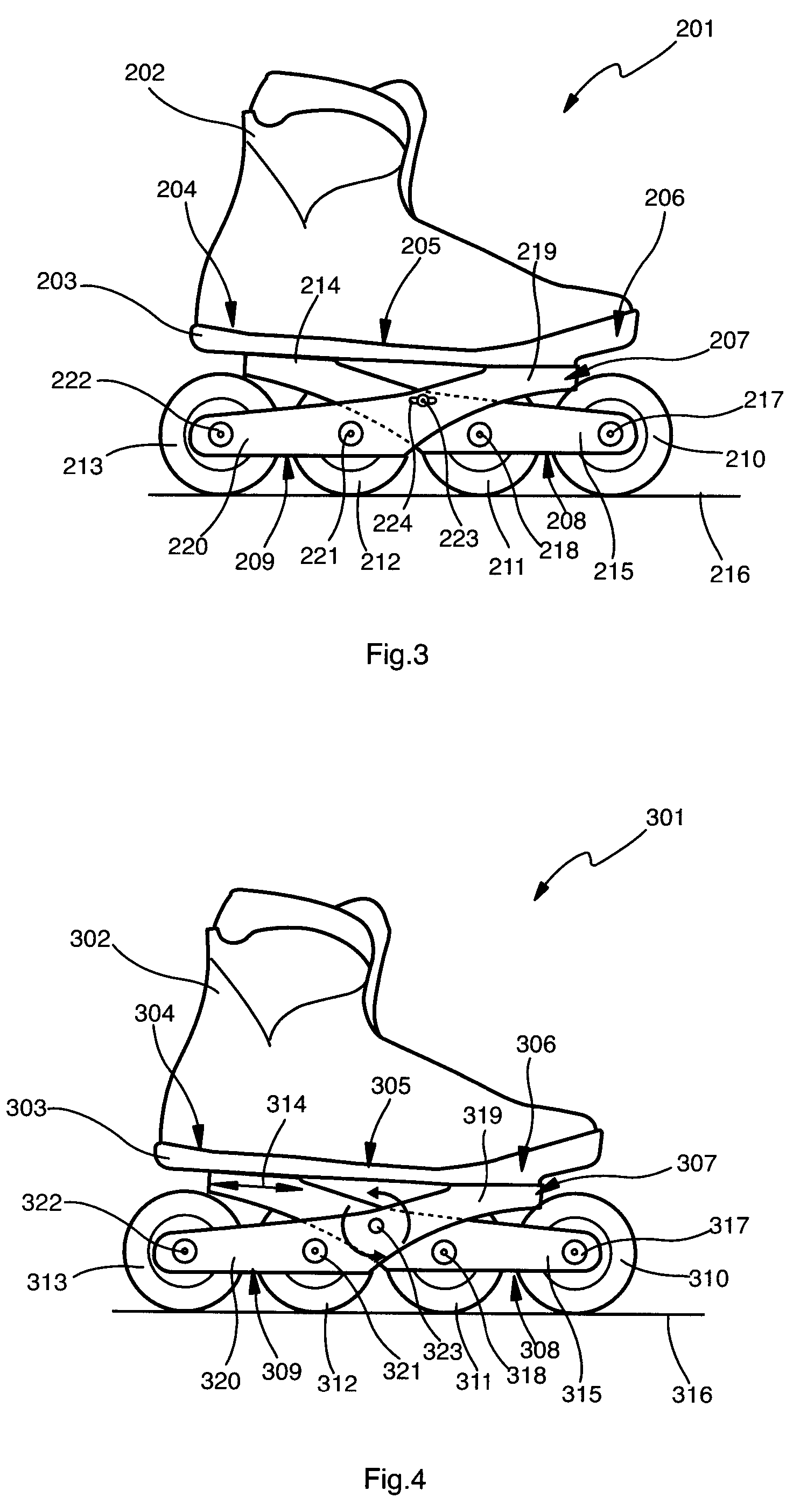Skate with in-line rollers or ice blades
a technology of inline rollers and skates, applied in the direction of roller skates, skate boards, sport equipment, etc., can solve the problems of insufficient loading of two carriages, inability to adequately control the carriage of skaters, and instability of the toe portion, so as to eliminate or drastically reduce the instability of the same skate
- Summary
- Abstract
- Description
- Claims
- Application Information
AI Technical Summary
Benefits of technology
Problems solved by technology
Method used
Image
Examples
second embodiment
[0028]So, for instance, FIG. 2 illustrates a second embodiment in which, in view of further enhancing both skate control and skating efficiency, the sole 103 of the footwear item 102 is made so as to be pliable, i.e. capable of bending, so as to be able to follow the natural motion of the foot during the skating stride, and the first carriage 108 is connected to the second carriage 109, while anyway maintaining the capability of moving relative to each other.
[0029]To such purpose, the sole 103 is made so as to be comprised of a rear part 103a, which includes the heel portion 104 and the rear portion of the central portion 105, and a front part 103b, which includes the front portion of the central portion 105 and the toe portion 106, said two parts being pivotally connected to each other by means of first hinge means 122 that are advantageously positioned in the central portion 105 at a site approximately corresponding to the articulation zone of the foot.
[0030]To the first carriage ...
third embodiment
[0032]FIG. 3 illustrates the skate according to the present invention, in which the sole 203 is preferably rigid; the first carriage 208 and the second carriage 209 are pivotally and slidably connected to each other by means of a pin-and-slot arrangement 223, 224.
[0033]Shown in FIG. 4 is a fourth embodiment of the skate according to the present invention, this fourth embodiment being substantially similar to the previous one, except for the fact that the above-mentioned pin-and-slot arrangement is in this case subdivided into a hinge 323, ensuring the pivoting connection between the first carriage 308 and the second carriage 309, and a sliding coupling between the first plate 314 and the sole 303 at the heel portion 304. As an alternative thereto, such sliding coupling may be provided between the second plate 319 and the toe portion 306.
fifth embodiment
[0034]The illustration in FIG. 5 refers to the skate according to the present invention, in which at least one of the first carriage 408 and the second carriage 409 is provided with an appendix extending upwards from the first arm 415 or the second arm 420, as the case may be, to interact with the second plate 419 or the first plate 414, respectively, via at least an elastic or vibration-damping member interposed therebetween. The two carriages 408 and 409 are coupled to each other by means of a hinge 423, and the sole 403 may be either rigid or pliable, either elastically or by means of a hinge in accordance with what has been illustrated and described in connection with the embodiment shown in FIG. 2. It will be readily appreciated that a number of different options are feasible to implement such connection between the carriages 408 and 409, according to what has been described with reference to the other embodiments illustrated hereinbefore.
[0035]In the case of the embodiment sho...
PUM
 Login to View More
Login to View More Abstract
Description
Claims
Application Information
 Login to View More
Login to View More - R&D
- Intellectual Property
- Life Sciences
- Materials
- Tech Scout
- Unparalleled Data Quality
- Higher Quality Content
- 60% Fewer Hallucinations
Browse by: Latest US Patents, China's latest patents, Technical Efficacy Thesaurus, Application Domain, Technology Topic, Popular Technical Reports.
© 2025 PatSnap. All rights reserved.Legal|Privacy policy|Modern Slavery Act Transparency Statement|Sitemap|About US| Contact US: help@patsnap.com



